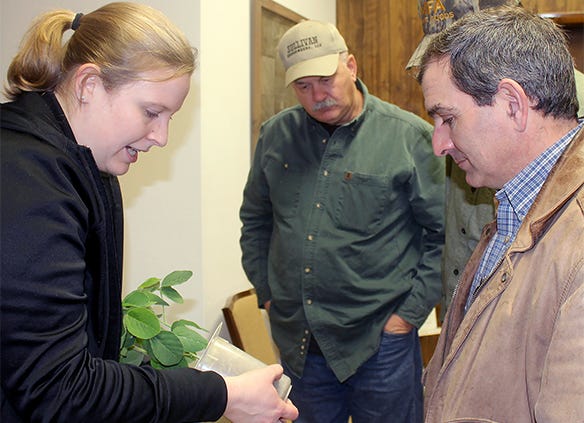March 13, 2019

What will boost your bottom line this year in soybean fields? According to the University of Missouri Strip Trial Program, you may want to add a seed treatment but hold off on the fungicide.
This program, which allows farmers to use their own equipment to conduct on-farm research in their own fields, looked at seed treatments and fungicides. Participating farmers worked with a specialist from the University of Missouri Extension, or other crop consultant of their choice, to guide the planning, implementation and methodology used for the trial. Then they share results with other growers.
Split decision on soybeans
Treating soybean seed may provide a bump in yield, but it does not do much to protect against soybean cyst nematode.
University of Missouri Strip Trial Program data from the past two years show that soybean seed treatments, such as ILeVo, did not reduce SCN egg counts and, in some cases, increased it.
MU researchers studied the effect of ILeVO seed treatment on SCN egg counts and yield by conducting trials in 19 locations in 2017 and 10 locations in 2018. Researchers took soil samples the first week of planting and the week of harvest to measure the number of SCN eggs in the soil.
“In the strip trials, we observed quite a bit of variability in SCN egg counts even within a field and between treatments,” MU Extension plant pathologist Kaitlyn Bissonnette says.
The data, she says, is consistent with small-plot research at Iowa State University and results reported by the Iowa Soybean Association OnFarm Network.
But Bissonnette was not only testing seed treatments.

CLOSER LOOK: MU Extension plant pathologist Kaitlyn Bissonnette (left) shows roots of soybean plants infected with soybean cyst nematode to Kelly Nelson, interim superintendent at MU’s Greenley Research Center.

Facts on fungicides
In another crop protection strip trial, Bissonnette looked at whether a fungicide applied to soybeans at the R3 growth stage effectively reduced foliar disease.
Last year’s dry growing season contributed to the low levels of foliar disease. Septoria brown spot was observed at all 10 locations and frogeye leaf spot was observed at eight locations, but levels of both diseases were low.
At one location where a susceptible variety of soybean was planted, frogeye leaf spot severity was greater in the untreated strips than the fungicide-treated strips. At all locations, researchers found no yield difference between treated and untreated strips.
Learn more about the program at striptrial.missouri.edu.
Source: The University of Missouri Extension, which is solely responsible for the information provided and is wholly owned by the source. Informa Business Media and all its subsidiaries are not responsible for any of the content contained in this information asset.
You May Also Like




